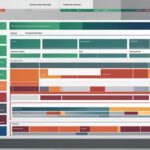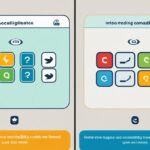Table of Contents
User testing plays a crucial role in ensuring the accessibility of digital platforms. It allows for the evaluation of how websites and web tools function for users with disabilities and older users, uncovering usability issues that may not be discovered through conformance evaluation alone. Evaluating with real users helps identify accessibility barriers that need to be addressed before bringing in users and provides valuable insights for improving the overall user experience. It is essential to involve a range of users, including those with disabilities, throughout the development process and to combine user evaluation with evaluating conformance to accessibility standards like WCAG.
Considerations for Usability Testing in Web Accessibility
Usability testing plays a significant role in evaluating web accessibility. While web accessibility evaluation primarily focuses on conforming to standards, usability testing with real users helps uncover accessibility and usability issues that may otherwise go unnoticed. By implementing an initial review to identify obvious accessibility problems and conducting a range of user evaluations, organizations can gain valuable insights into how users with disabilities and older users interact with websites and web tools.
Informal consultations and observations with users with disabilities can be a simple yet effective method to gather feedback and identify potential issues. These discussions can occur while users interact with prototypes, providing developers with valuable input for improvements. On the other hand, formal usability tests follow established protocols and gather quantitative and qualitative data from representative users.
During usability testing, it is essential to consider a holistic approach to evaluate web accessibility. This includes examining the user experience from the perspective of individuals with disabilities and older users, focusing on their specific needs and challenges. By conducting usability tests, organizations can gain insights into the effectiveness and efficiency of various accessibility features and enhancements.
“Usability testing with real users helps uncover accessibility and usability issues that may otherwise go unnoticed.”
Advantages of Usability Testing in Web Accessibility
- Identifying and resolving accessibility barriers that may not be discovered through conformance evaluation alone.
- Improving the overall user experience for individuals with disabilities and older users.
- Gaining insights into the effectiveness and efficiency of accessibility features.
- Ensuring the usability of websites and web tools across different devices and platforms.
| Usability Testing in Web Accessibility | Benefits |
|---|---|
| Uncovering accessibility and usability issues | Gaining valuable insights for improvement |
| Evaluating the user experience | Enhancing effectiveness and efficiency of accessibility features |
| Ensuring usability across devices and platforms | Improving overall user experience |
Usability testing provides organizations with concrete feedback on how users with disabilities and older users navigate and interact with digital platforms. By incorporating this feedback, organizations can make informed decisions to enhance web accessibility and provide a better user experience for all.
Including Users in Evaluation for Better Accessibility
Involving users with disabilities and older users in the evaluation process is crucial for achieving better accessibility. By including a diverse range of users with disabilities and involving them throughout the development process, organizations can gather valuable insights to improve the accessibility of their digital platforms. Engaging in discussions with these users helps identify and address accessibility issues that may otherwise go unnoticed.
When including users in the evaluation process, it is important to consider the target users and include individuals with varying levels of experience. This could include novice, average, or advanced users based on the specific application or website being developed. By including a diverse group of users, organizations can ensure that their digital platforms cater to the needs of a wide range of individuals, resulting in better accessibility for all.
Evaluating with users with disabilities not only helps in finding accessibility problems but also reveals general usability problems that may affect all users. By actively involving users with disabilities, organizations can gain insights into how the interface and features of their digital platforms impact the overall user experience. This evaluation process helps in identifying areas of improvement, leading to better accessibility and usability for all users.
“Including users with disabilities in the evaluation process brings valuable perspectives and insights that help us understand the unique challenges they face. By actively involving these users, we can make informed decisions to create more accessible and user-friendly websites and web tools.” – Jane Smith, Accessibility Specialist
Overall, including users with disabilities and older users in the evaluation process is essential for achieving better accessibility. By actively involving these users throughout the development process and considering their diverse needs and experiences, organizations can create digital platforms that are more inclusive and accessible to all users.
Analyzing Accessibility Issues in Web Development
Web accessibility is an essential aspect of web development that involves several components, including web browsers, assistive technologies, and web content. Analyzing accessibility issues plays a crucial role in ensuring that websites and web tools are accessible to all users, including those with disabilities.
Accessibility problems can arise from various factors, such as issues in markup or coding, compatibility with browsers or media players, functionality of assistive technologies, users’ lack of familiarity with technology, and poorly designed web pages. It is important to identify and address these issues to create an inclusive online environment.
When analyzing accessibility issues, it is necessary to evaluate the user experience by involving users with disabilities. This user-centric approach provides valuable insights into the accessibility barriers that users may encounter. Additionally, assessing conformance to accessibility standards like WCAG (Web Content Accessibility Guidelines) helps ensure that websites and web tools meet the necessary accessibility requirements.
Components Impacting Web Accessibility
Analyzing accessibility issues requires understanding the interaction between different components of web development. Here are key components that can impact the accessibility of a website or web tool:
- Web Browsers: Different browsers may interpret and display web content differently, leading to accessibility discrepancies. It is important to test websites across multiple browsers to ensure consistent accessibility.
- Assistive Technologies: Users with disabilities rely on assistive technologies such as screen readers, magnifiers, and alternative input devices to navigate and interact with web content. Ensuring compatibility and functionality with these technologies is crucial for accessibility.
- Web Content: Properly structured and semantically marked-up content enhances accessibility. Using appropriate HTML elements, providing alternative text for non-text content, and ensuring proper heading hierarchy improves the accessibility of web content.
By comprehensively analyzing accessibility issues in web development, developers and stakeholders can identify and address barriers that may hinder the accessibility of digital platforms. This process significantly contributes to ensuring equal access and usability for all individuals.
Below is a visual representation demonstrating the interplay between the different components impacting web accessibility:
| Web Development Component | Impact on Accessibility |
|---|---|
| Web Browsers | Rendering differences can affect the accessibility of web content. |
| Assistive Technologies | Compatibility and functionality are essential for users with disabilities. |
| Web Content | Proper structure and semantic markup enhance accessibility. |
A comprehensive understanding of these components enables developers to create accessible web experiences that empower and include all users.
In the next section, we will explore user testing for specific disabilities, highlighting the importance of considering a range of disabilities in the evaluation process.
User Testing for Specific Disabilities
When conducting user testing for accessibility, it’s vital to consider a range of disabilities and their specific interactions with websites or web tools. Different disabilities require specific testing methods to ensure thorough evaluation and identify any accessibility barriers. Here are some key considerations for user testing with specific disabilities:
Visual Disabilities
Visual disabilities, such as blindness, low vision, and color blindness, require testing with assistive technologies like screen readers and magnifiers. These tools simulate the experience of users with visual impairments and help identify any issues related to navigation, content comprehension, and color contrast. User testing with assistive technologies is essential to ensure that websites and web tools are accessible to individuals with visual disabilities.
Motor Skill Impairments
Individuals with motor skill impairments may have difficulty using a mouse or other conventional input devices. To evaluate the accessibility of a website, it’s important to test for keyboard accessibility and alternative methods of interaction, such as voice commands or switch devices. User testing with individuals with motor skill impairments helps uncover any barriers that may hinder their ability to navigate and interact with digital platforms effectively.
Hearing Impairments
Hearing impairments may require specific accommodations to ensure equal access to information. During user testing, it’s important to assess the availability and effectiveness of captioning, transcripts, and other forms of audio support. Testing with individuals with hearing impairments provides valuable insights into the accessibility of audio content and the usability of alternative communication methods.
Cognitive Impairments and Other Disabilities
Individuals with cognitive impairments or other disabilities may have unique challenges when using websites or web tools. User testing with these individuals helps evaluate the clarity of content, the simplicity of navigation, and the overall usability of the platform. By considering a wide range of disabilities and conducting comprehensive user testing, organizations can ensure that their digital platforms are accessible to all individuals.
| Disability | Testing Considerations |
|---|---|
| Visual Disabilities | Testing with assistive technologies like screen readers and magnifiers |
| Motor Skill Impairments | Testing for keyboard accessibility and alternative methods of interaction |
| Hearing Impairments | Assessing captioning, transcripts, and other forms of audio support |
| Cognitive Impairments and Other Disabilities | Evaluating clarity of content, simplicity of navigation, and overall usability |
Best Practices for Remote Moderated Accessibility Testing
Remote moderated accessibility testing provides the flexibility and convenience required when conducting in-person sessions is challenging. To ensure a successful project, it is essential to follow best practices that enhance the effectiveness of remote moderated accessibility testing.
- Work with a smaller sample size: When conducting remote moderated accessibility testing, it is recommended to work with a smaller sample size of participants with disabilities. This allows for better focus and a more manageable testing process.
- Assemble a two-person team: For smooth facilitation of the testing sessions, it is advisable to have a two-person team consisting of a moderator and tech support. The moderator can guide the participants through the testing process, while tech support ensures the technical aspects run smoothly.
- Focus on key tasks: To maximize the time allocated for testing, it is recommended to prioritize a few key tasks that cover the core functionalities and essential accessibility features of the digital platform under evaluation.
- Define the target audience and disabilities: Carefully defining the specific target audience and disabilities to test for allows for a more targeted evaluation. This ensures that the testing captures the perspectives and experiences of users who are most likely to encounter accessibility challenges.
- Seek specialized recruitment partners: Collaborating with specialized recruitment partners who have expertise in sourcing participants with disabilities can help ensure a diverse and representative sample of users for testing.
- Allocate time for tech checks and test sessions: It is important to allocate adequate time for thorough tech checks and test sessions. This ensures that all technical aspects, such as screen sharing, audio, and video quality, are properly set up before the testing begins.
By following these best practices, organizations can optimize their remote moderated accessibility testing process and gather valuable insights into the accessibility and usability of their digital platforms.
Conclusion
User testing accessibility is a critical component of creating inclusive and functional digital platforms. By involving users with disabilities and older users throughout the development process and conducting usability testing, organizations can identify and address accessibility and usability issues. Evaluating with real users provides valuable insights that go beyond conformance to accessibility standards. It is essential to consider a wide range of disabilities and their specific interactions with websites or web tools during user testing. Remote moderated accessibility testing with best practices ensures a successful evaluation of accessibility. By prioritising user testing in accessibility, organizations can create digital platforms that are inclusive and functional for everyone.
FAQ
What is the importance of user testing in accessibility?
User testing plays a crucial role in ensuring the accessibility of digital platforms. It allows for the evaluation of how websites and web tools function for users with disabilities and older users, uncovering usability issues that may not be discovered through conformance evaluation alone.
Why is usability testing important in web accessibility?
Usability testing with real users helps to uncover accessibility and usability issues that may not be identified through other methods. It provides valuable insights into how users with disabilities and older users interact with a website or web tool.
How can users be included in the evaluation process for better accessibility?
Involving users with disabilities and older users throughout the development process is crucial for achieving better accessibility. Getting a diverse range of users with disabilities and involving them in completing sample tasks on prototypes helps in identifying and addressing accessibility issues.
What components of web development can impact accessibility?
Web accessibility depends on various components of web development, including web browsers, assistive technologies, and web content. Issues in markup or coding, browser or media player compatibility, assistive technology functionality, and poorly designed web pages can all affect accessibility.
How should user testing cater to specific disabilities?
When conducting user testing for accessibility, it’s vital to consider a range of disabilities and their specific interactions with websites or web tools. Different disabilities require testing with assistive technologies, keyboard accessibility, alternative methods of interaction, captioning, or other forms of audio support.
What are the best practices for remote moderated accessibility testing?
Remote moderated accessibility testing allows for more flexibility and convenience. Best practices include working with a smaller sample size of participants with disabilities, having a two-person team consisting of a moderator and tech support, focusing on a few key tasks, carefully defining the audience and disabilities to test for, and allocating time for tech checks and test sessions.













